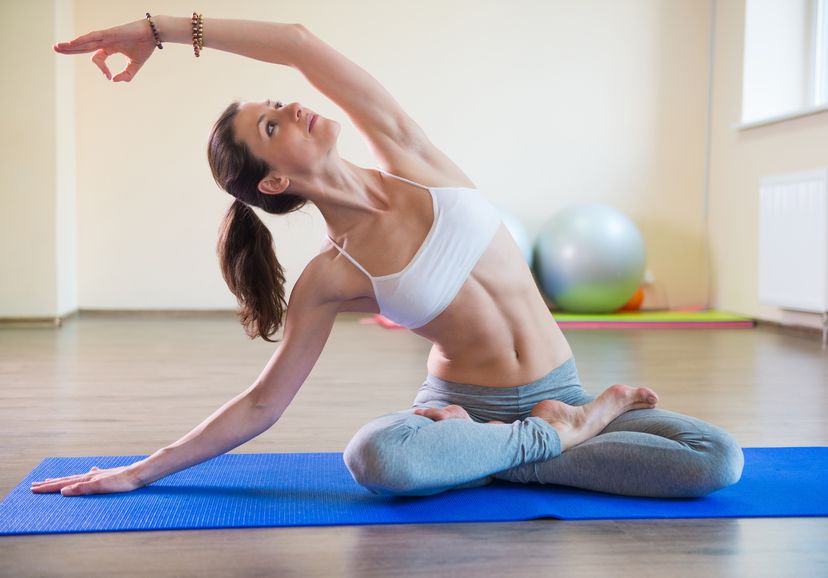Physical activity is key to any weight loss program. When combined with a healthy diet, exercise helps burn calories, resulting in weight loss and a reduction in risk for serious health problems, including heart disease, diabetes, stroke and some types of cancer. Exercise lowers blood pressure and cholesterol, which may prevent heart attacks. It also improves self-confidence and promotes a sense of well being, lowering rates of anxiety and depression.
The most effective exercise regimen is comprised of various types of physical activities to work the whole body. These are the building blocks of a well-rounded fitness program.
Aerobic Exercises
Aerobic exercise or cardio stimulates your heart rate and breathing cadence to deliver oxygenated blood to your muscles. Aerobic exercise is especially beneficial in improving heart health. The American Heart Association recommends adults get at least 150 minutes of moderate-intensity exercise or 75 minutes of high-intensity aerobic exercise each week. Examples of aerobic exercise include running, cycling, swimming, walking, hiking and dancing. Aerobic activity causes you to breathe deeper, maximizing the oxygen in your blood.
Strength Training
Strength training increase lean muscle mass and post-exercise oxygen consumption, resulting in more calories burned and increased weight loss. The more muscle mass your body has, the more calories it will burn during exercise and while at rest. Think of strength training as complementary to aerobic exercise. You don’t need weight equipment to build strength — body weight exercises such as squats, lunges, burpees, pushups and situps are effective strength training exercises you can do anywhere.
Core Exercises
The core muscles are responsible for supporting the spine and enable you to effectively use upper and lower body muscles. Core exercises help strengthen these areas to give your body the stability it needs to perform everyday tasks. Examples of core exercises include abdominal crunches, plank, sliding plank, reverse crunches, side balance crunches, bicycles and leg raises. You can perform most core exercises on the floor or, for an added challenge, on a fitness ball.
Balance Exercises
Exercises to improve balance benefit your neuromuscular coordination, improving communication between your brain and muscles. During balance training, you focus on maintaining stability while performing various movements. Many balance exercises employ pillow disks, balance wedges, wobble boards or rocker boards for added instability. Because your body has to work harder to maintain stability, balance training helps burn more calories. It also improves athletic performance and posture.
Flexibility Training
Stretching and flexibility exercises help to prevent injuries by releasing tension in the muscles. They also correct posture and maximize joint strength. By doing flexibility exercises regularly, you can improve your performance of everyday tasks and athletic activities. When doing flexibility and stretching exercises, be sure to hit every major muscle group, including back, chest, shoulders, arms and legs.
A well-rounded fitness program is an effective fitness program. If you have questions about how to exercise or what types of exercises are right for you, contact a certified professional trainer for guidance.






